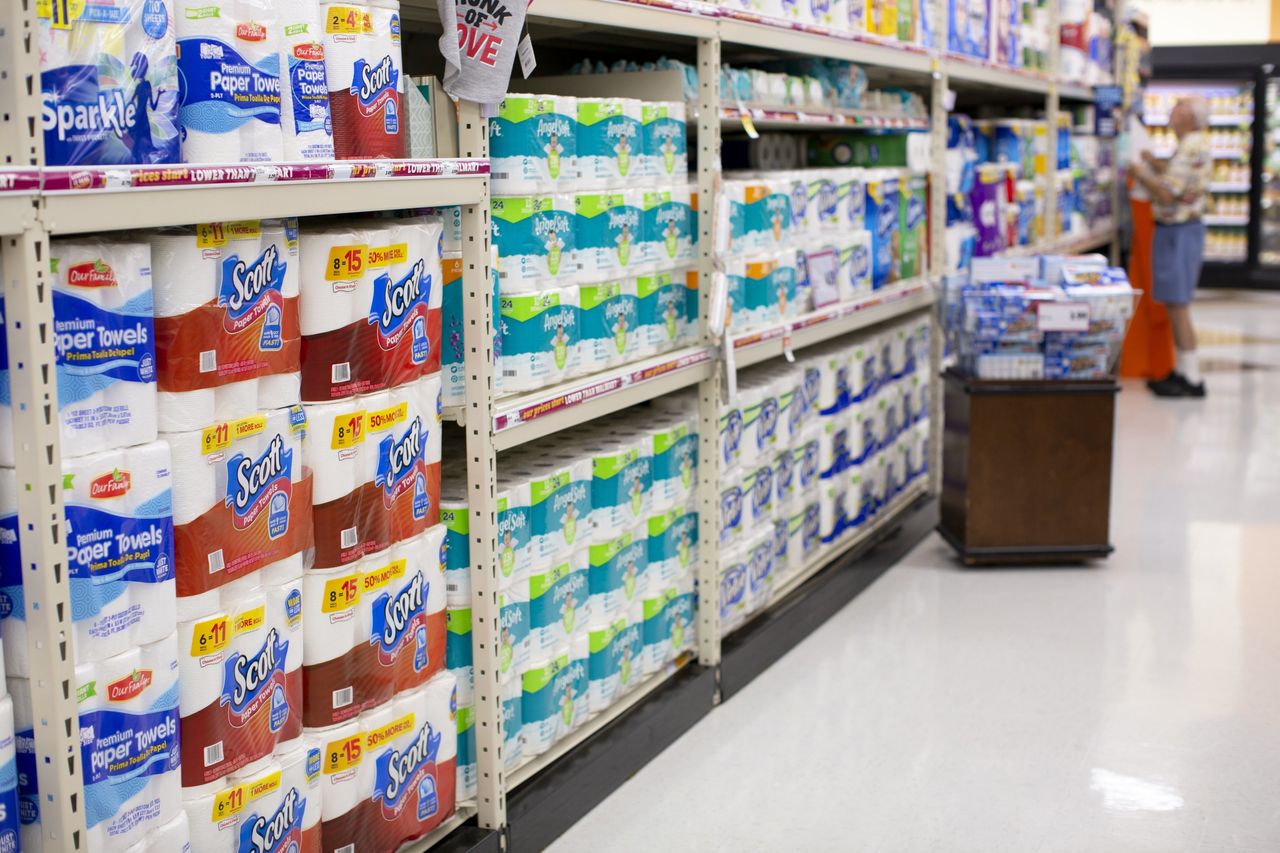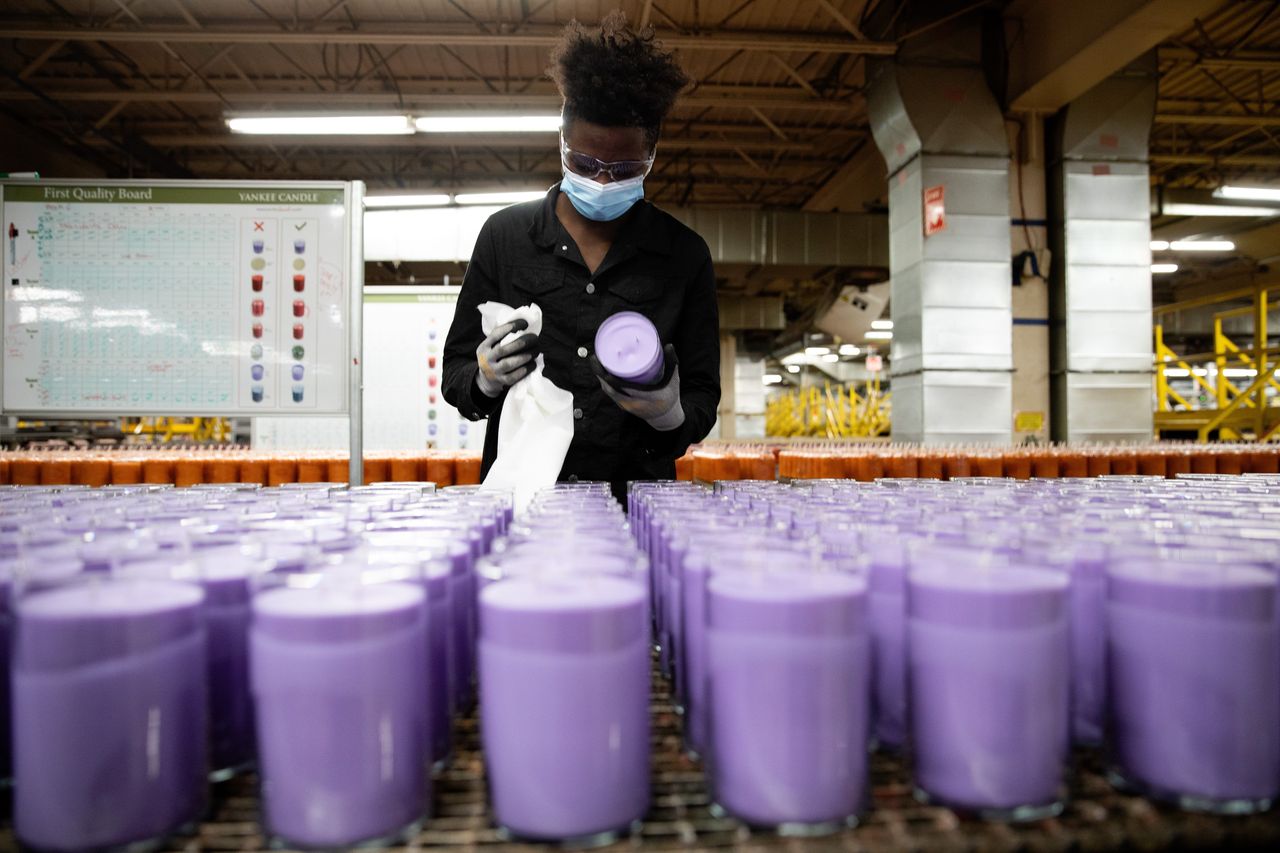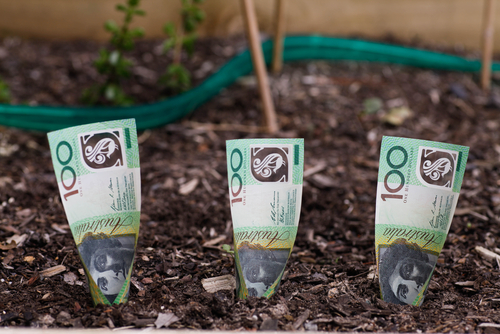Covid Slashed Consumer Choices. This Is Why They Aren’t Coming Back.
Retailers and suppliers say it didn’t pay to offer products for everyone, and customers didn’t care that much when they stopped
The furniture retailer Malouf sells beds and bedding in a fraction of the colours it did a few years ago. Newell Brands, the Sharpie maker, has retired 50 types of Yankee Candle. Coca-Cola offers half as many drinks.
Covid slashed consumer choices as companies pared their offerings to ease clogs in the supply chain. The logistical mess is behind them. But many of the choices aren’t coming back.
Retailers and suppliers across industries—from groceries to health, beauty and furniture—have said that it didn’t pay to offer products for everyone, and consumers didn’t care that much when they stopped.
“Today, people would rather lose a portion of consumer demand as opposed to spending extra on too much variety,” said Inna Kuznetsova, chief executive officer of ToolsGroup, a supply-chain planning and optimisation company.
Macy’s president and CEO-elect, Tony Spring, told analysts in November that “the customer today does not want an endless aisle.”
New items made up about 2% of products in stores in 2023 across categories such as beauty, footwear and toys, down from 5% of items in 2019, according to the market-research firm Circana. Shelf Engine, a technology company that automates ordering for grocery retailers, said large grocery stores have reduced fresh-food offerings such as fruit, dairy products and deli meats by 15% to 20%.
Large grocers cutting back on choice is a reversal from pre pandemic days, when they believed they had to carry everything to avoid losing customers to the store across the street, said Stefan Kalb, CEO of Shelf Engine.
Kalb said that grocers are now saving money because they have fewer items to manage and that the slimming of product options is reducing food waste.
Executives at consumer-product companies said the thinning of their product lines has been a relief for those struggling to improve profitability in the midst of higher interest rates and rising costs for raw materials and labor. They said many of the reductions have been in lines that consumers wouldn’t notice, such as items in special packaging and assortments for specific big-box retailers. The cutbacks are also to product lines that drown consumers in options.
“I don’t think any consumer would have noticed we went from 200 to 150” types of Yankee Candle, said Chris Peterson, chief executive of Newell Brands.
Some industry specialists said the new focus on bestselling items has reduced innovation and hurt smaller brands that rely on retailers’ desire to carry something for everyone.
“There has definitely been less innovation since the pandemic,” said Seth Goldman, a founder of the organic-beverage maker Honest Tea, which was bought by Coca-Cola in 2011 and discontinued in 2022.
Coca-Cola over the past few years reduced its brands to 200 from 400, cutting slow-growing as well as declining products, including small regional lines such as Northern Neck Ginger Ale and national brands such as its first diet cola, Tab.
“It was pruning the garden to let the better plants grow,” Coca-Cola Chief Executive James Quincey said in 2022.
Goldman said there was still demand for Honest Tea, even if it wasn’t big enough for Coca-Cola. In September 2022, four months after Coca-Cola’s announcement, he launched Just Ice Tea, a drink that he said is similar to Honest Tea and that is expected to have sales in 2023 of more than $16 million.
Companies began winnowing product lines in the years leading up to the pandemic as a corrective to previous decades when consumer choice ballooned. That was partly because of the internet, where online retailers weren’t constrained by the space limitations of physical stores, giving rise to the term “endless aisle.”
The cuts were turbocharged in 2020 and 2021, when product shortages and a surge in consumer spending led companies to give priority to the most in-demand items. They focused on products that ran fastest on production lines and, because of social distancing in factories, could be made with automated machinery.
Kimberly-Clark cut more than 70% of its toilet paper and facial-tissue products over a single weekend in 2020 as it rushed to satisfy a fourfold increase in demand, said Tamera Fenske, the company’s chief supply chain officer.
Fenske said the company jettisoned slow-selling items as well as many of the special counts and custom sizes it made for individual retailers. Fenske said that, as pandemic restrictions eased, Kimberly-Clark was able to be more thoughtful about the items it brought back. She said the company carries about 30% fewer product lines in North America than it had at the start of 2020.
PVH, which owns Tommy Hilfiger and Calvin Klein, embarked in 2020 on a plan to cut more than a fifth of its offerings to focus on what it calls “hero” products—those that make up an essential part of someone’s wardrobe.

Some companies said the culling of less-popular products opened up space for new lines.
Georgia-Pacific stopped selling 164-sheet rolls of Quilted Northern toilet paper because its larger rolls were better for consumers who valued longer-lasting rolls, said Kim Burns, senior vice president of supply chain for Georgia-Pacific’s consumer products group. Burns said the company has subsequently invested more time and money in new product lines, such as toilet paper with a scented tube that acts as a bathroom air freshener.
For other companies, the supply-chain shock provided a real-life experiment in how trimming product lines could improve productivity without hurting customer satisfaction. “It was quite shocking as we parsed it out to see we were using a lot of our buying power to really not get much of a return on investment,” said Nick Jensen, vice president of product at Malouf.
The Logan, Utah-based furniture company has reduced its lines to about 3,500 product choices, down from almost 11,000 items before the pandemic. Jensen said the company is adding new items more carefully these days.
“If we have 15 different colours and three shades of grey, it’s a paralysing choice,” Jensen said. “It’s kind of forced us to be much more intentional versus throwing a lot of things at the wall and hoping that they stick.”
—Suzanne Kapner contributed to this article.
 Copyright 2020, Dow Jones & Company, Inc. All Rights Reserved Worldwide. LEARN MORE
Copyright 2020, Dow Jones & Company, Inc. All Rights Reserved Worldwide. LEARN MORE
This stylish family home combines a classic palette and finishes with a flexible floorplan
Just 55 minutes from Sydney, make this your creative getaway located in the majestic Hawkesbury region.
Continued stagflation and cost of living pressures are causing couples to think twice about starting a family, new data has revealed, with long term impacts expected
Australia is in the midst of a ‘baby recession’ with preliminary estimates showing the number of births in 2023 fell by more than four percent to the lowest level since 2006, according to KPMG. The consultancy firm says this reflects the impact of cost-of-living pressures on the feasibility of younger Australians starting a family.
KPMG estimates that 289,100 babies were born in 2023. This compares to 300,684 babies in 2022 and 309,996 in 2021, according to the Australian Bureau of Statistics (ABS). KPMG urban economist Terry Rawnsley said weak economic growth often leads to a reduced number of births. In 2023, ABS data shows gross domestic product (GDP) fell to 1.5 percent. Despite the population growing by 2.5 percent in 2023, GDP on a per capita basis went into negative territory, down one percent over the 12 months.
“Birth rates provide insight into long-term population growth as well as the current confidence of Australian families,” said Mr Rawnsley. “We haven’t seen such a sharp drop in births in Australia since the period of economic stagflation in the 1970s, which coincided with the initial widespread adoption of the contraceptive pill.”
Mr Rawnsley said many Australian couples delayed starting a family while the pandemic played out in 2020. The number of births fell from 305,832 in 2019 to 294,369 in 2020. Then in 2021, strong employment and vast amounts of stimulus money, along with high household savings due to lockdowns, gave couples better financial means to have a baby. This led to a rebound in births.
However, the re-opening of the global economy in 2022 led to soaring inflation. By the start of 2023, the Australian consumer price index (CPI) had risen to its highest level since 1990 at 7.8 percent per annum. By that stage, the Reserve Bank had already commenced an aggressive rate-hiking strategy to fight inflation and had raised the cash rate every month between May and December 2022.
Five more rate hikes during 2023 put further pressure on couples with mortgages and put the brakes on family formation. “This combination of the pandemic and rapid economic changes explains the spike and subsequent sharp decline in birth rates we have observed over the past four years,” Mr Rawnsley said.
The impact of high costs of living on couples’ decision to have a baby is highlighted in births data for the capital cities. KPMG estimates there were 60,860 births in Sydney in 2023, down 8.6 percent from 2019. There were 56,270 births in Melbourne, down 7.3 percent. In Perth, there were 25,020 births, down 6 percent, while in Brisbane there were 30,250 births, down 4.3 percent. Canberra was the only capital city where there was no fall in the number of births in 2023 compared to 2019.
“CPI growth in Canberra has been slightly subdued compared to that in other major cities, and the economic outlook has remained strong,” Mr Rawnsley said. “This means families have not been hurting as much as those in other capital cities, and in turn, we’ve seen a stabilisation of births in the ACT.”
This stylish family home combines a classic palette and finishes with a flexible floorplan
Just 55 minutes from Sydney, make this your creative getaway located in the majestic Hawkesbury region.






















